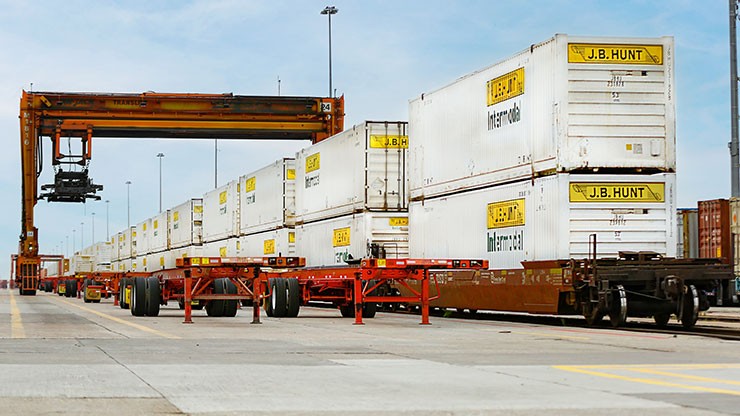J.B Hunt Posts Massive Q1 Earnings Miss

J.B. Hunt Transport Services reported lower-than-anticipated profits for the first quarter, missing analysts' estimates. This decline stemmed primarily from a 9% drop in revenue per load across both their key Intermodal (JBI) and Truckload (JBT) segments.
Additionally, a 22% reduction in loads shipped within their Integrated Capacity Solutions (ICS) unit significantly impacted overall revenue. The modest 2% growth in Final Mile Services (FMS) revenue, driven by new contracts, wasn't enough to offset the negative performance in other areas.

Image: J.B Hunt Q1 2024 Earnings Report
Rising Costs Squeeze Profit Margins
J.B. Hunt's operating income also suffered a significant 30% decrease. This decline was largely due to lower volumes and pressure on revenue per load across several segments. The company also faced increased expenses in equipment, insurance, and claims. Higher costs related to professional driver and non-driver wages and benefits further squeezed profit margins.
Segment Performance Deep Dive
- Intermodal (JBI): This key segment saw a concerning 40% drop in operating income despite stable volume. The culprit? A 9% decline in revenue per load.
- Dedicated Contract Services (DCS): Operating income in this segment fell by 9%, impacted by lower productivity and the higher start-up costs associated with acquiring new accounts.
- Final Mile Services (FMS): This segment provided a bright spot, with a robust 128% increase in operating income. This growth resulted from new contract implementations and improved operational efficiencies.
- Integrated Capacity Solutions (ICS): This unit reported a significant operating loss of $17.5 million, a considerable worsening from the previous year's loss of $5.4 million. Decreased gross profit and higher insurance costs were the primary drivers of this decline.
- Truckload (JBT): This segment faced significant challenges as well, with operating income plummeting by 75% due to a decline in both load volume and revenue per load.